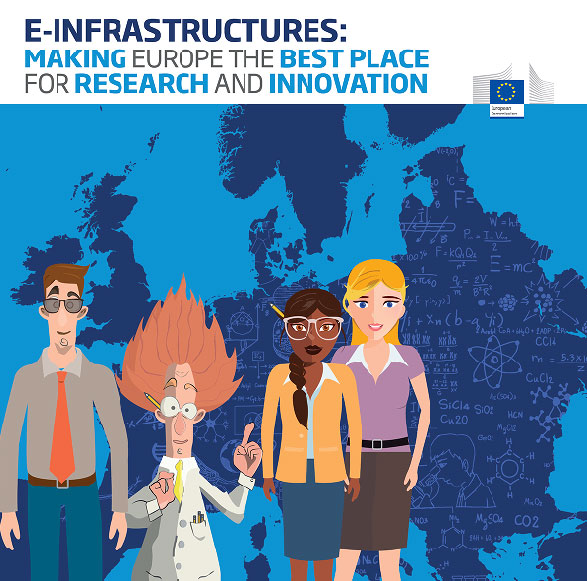
Have you ever wondered what exactly an “e-infrastructure” is and how it changes your life?
 The European Commission, specifically the e-Infrastructure unit[1] in the Directorate General for Communications Networks, Content & Technology (DG CONNECT), recently launched a publication entitled “E-INFRASTRUCTURES: Making Europe the best place for Research and Innovation”. Readers are taken on a journey by John and his research colleagues from all over Europe, who use fundamental facilities offered by European e-infrastructures[2] to conduct their research and do excellent science. When you get to end of the journey, you will have learnt about the transnational communication networks, high performance and high throughput computing, multidisciplinary data management and collaborative scientific software that make up these e-Infrastructures.
The European Commission, specifically the e-Infrastructure unit[1] in the Directorate General for Communications Networks, Content & Technology (DG CONNECT), recently launched a publication entitled “E-INFRASTRUCTURES: Making Europe the best place for Research and Innovation”. Readers are taken on a journey by John and his research colleagues from all over Europe, who use fundamental facilities offered by European e-infrastructures[2] to conduct their research and do excellent science. When you get to end of the journey, you will have learnt about the transnational communication networks, high performance and high throughput computing, multidisciplinary data management and collaborative scientific software that make up these e-Infrastructures.
These powerful e-Infrastructures address the needs of European researchers for digital services in terms of networking, computing and data management empowering 1.7 million researchers with easy and secure online access to facilities and resources and enable them to deliver reusable and reproducible research and innovation outputs.
Where does EUDAT fit in?
EUDAT – the European Data Infrastructure – is one of the 24 e-infrastructures and Virtual Research Environments (VREs) that support John and his colleagues on their research adventure. To understand why they and other European researchers cannot do without EUDAT and the other e-Infrastructures, download the publication at ec.europa.eu/digital-single-market/en/news/e-infrastructures-making-europe-best-place-research-and-innovation
[2] During the period 2014 -2020, the EU will have invested more than 850 million euros in digital infrastructures through its Horizon 2020 e-infrastructure programme.
